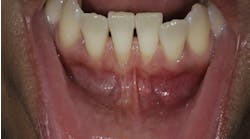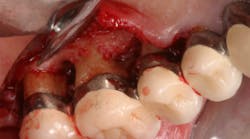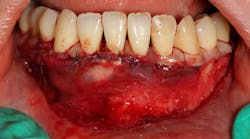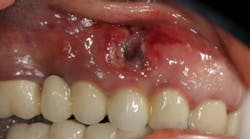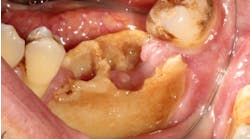Traditional dental anesthesia is more effective with addition of mannitol
Anesthesia Progress – An improvement may be in order for the most common dental anesthetic. The inferior alveolar nerve block is the most commonly used form of local anesthesia for mandibular restorative and surgical procedures. A study found that the addition of the drug mannitol significantly increases the effectiveness of this anesthetic.
OTHER ARTICLES FROM ANESTHESIA PROGRESS ...
Anesthetic combination provides a more rapid recovery after oral surgery
Orthognathic surgery and recovery have different anesthetic requirements
The journal Anesthesia Progress presents a study testing the efficacy of lidocaine with epinephrine compared with equal amounts of lidocaine with epinephrine plus mannitol. After injection of the anesthetic, the subjects’ teeth were electric pulp tested for sensation. Pain of solution deposition and postoperative pain were also measured.
Failure rates of 10% to 39% for the traditional formulation of lidocaine and epinephrine have been reported. One reason may be that, because of the perineurial barrier around the nerve, the anesthetic solution does not completely diffuse into the nerve trunk. With mannitol, the anesthetic solution permeates the nerve trunk in greater amounts, increasing the efficiency of the anesthetic.
The same 40 patients were given both drug combinations in two separate appointments at least one week apart. To blind the experiment, random five-digit numbers were assigned to each anesthetic formulation, so neither the patients nor the personnel administering the anesthetic knew which formulation was being given.
An electric pulp tester was used to test the sensitivity of the patients’ teeth. A drop of toothpaste acts as a conductor of the electric current to the tooth. After the injection of the nerve block, different teeth were tested once a minute in a repeating pattern for a total of 60 minutes. The patients also rated their experiences of lip numbness and postoperative pain on a scale of 0 to 3.
No significant differences were found between the two treatments for pain of solution deposition and postoperative pain. However, the mannitol treatment in this test was shown to be more effective for all teeth, offering a greater level of pain relief for dental patients.
Full text of “Anesthetic Efficacy of a Combination of 0.5 M Mannitol Plus 127.2 mg of Lidocaine With 50 μg Epinephrine in Inferior Alveolar Nerve Blocks: A Prospective Randomized, Single-Blind Study,” and other articles, Anesthesia Progress, Vol. 60, No. 1, 2013, are available here.
About Anesthesia Progress
Anesthesia Progress is the official publication of the American Dental Society of Anesthesiology (ADSA). The quarterly journal is dedicated to providing a better understanding of the advances being made in the science of pain and anxiety control in dentistry. The journal invites submissions of review articles, reports on clinical techniques, case reports, and conference summaries. To learn more about the ADSA, visit their website.
